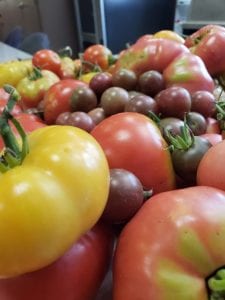
Vegetable gardening is very popular these days, and even more so since the COVID outbreak. Anyone new to this hobby is quick to hear some terms being thrown around when describing different types of vegetables. Knowing the meaning of these terms gives prospective gardeners some key information that helps them pick varieties of vegetables most suited to their needs. All living creatures, known to man, are classified according to species and genus. So for instance, all tomatoes are classified as Solanum lycospersicum.
To start off, I already used the term “variety”. This term is used rather loosely in horticulture and is incorrectly interchanged with “cultivar”. Both refer to the differences in the species of plant you have chosen. Varieties refer to naturally occurring deviations from the original species. They typically come true to seed. Cultivars have been purposely cross-bred from two or more different species. Plants must be either vegetatively propagated or started from hybrid seed each year. These varieties or cultivars have names and are associated with specific characteristics. For example when I say “Sweet Millions” tomatoes, a person familiar with this cultivar knows that they are cherry tomatoes, indeterminate, very flavorful, and highly productive. For the sake of this article, I will stick with tomato examples, but these terms could apply to many vegetable species and cultivars.
Our tomato plants contain both male and female flower parts. Because of this, they are easily pollinated by wind or bees. This is problematic for greenhouse tomato growers, so they will hand pollinate the tomatoes with paint brushes or even special electronic devices that shake the flower to accomplish pollination. Fortunately for us outdoor gardeners, we do not need to do anything special for pollination to occur.
Probably the best place to start is talking about “open pollination.” This is essentially how Mother Nature does things. There is a large population of organisms that have genes for individual traits, or characteristics. If we stick with our tomato example, think of: size, color, growth habit, disease resistance, plant height, etc. In my example, the population of tomatoes living in the wild in a certain area would have a lot of genetic diversity. As we all have experienced, the weather can vary from year to year. Genetic diversity in the population is nature’s way of ensuring that some organisms will survive and reproduce. Likewise, different parts of the country (or the world) will have different weather, climates, and microclimates. Certain traits or characteristics are an advantage or a disadvantage depending on where you are living. Over time, a population of tomatoes will see an increase in the genes that help it survive in the local environments. These would be considered different varieties of tomatoes.
Some growers like to have open pollinated plants. They see which tomatoes produce the best and then save seeds from those plants to be planted the following year. In this way, the gardener is essentially developing a variety of tomato that is perfectly suited to living, growing, and even thriving in that particular area of the world. In addition, the gardener may also select for certain traits he or she prefers, like low acid, yellow tomatoes for example. Over time, the gardener may select and replant only the seeds of the plants that conform to certain pre-determined criteria. Eventually the plants will breed true, or have the same set of characteristics, year to year.
Click here to read more.